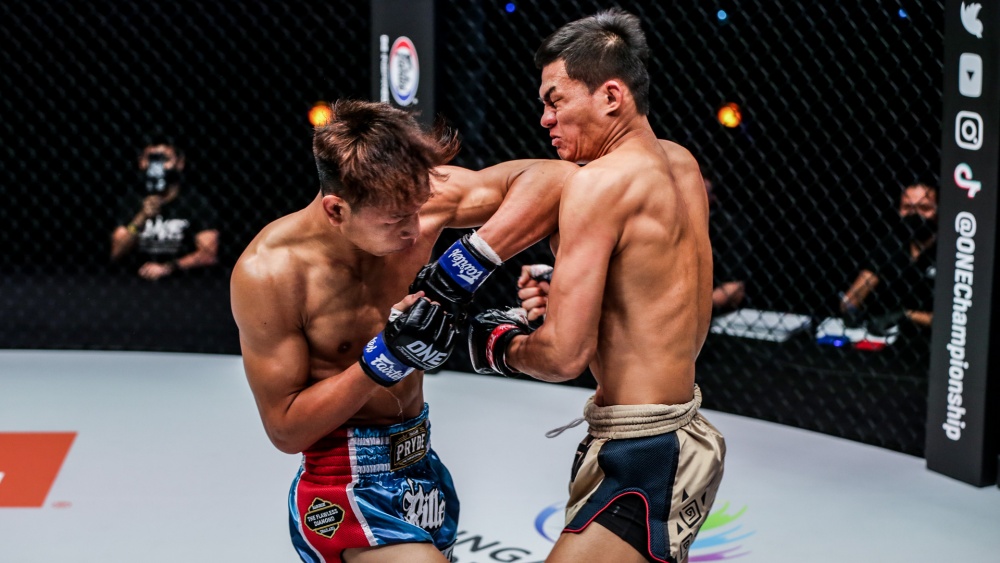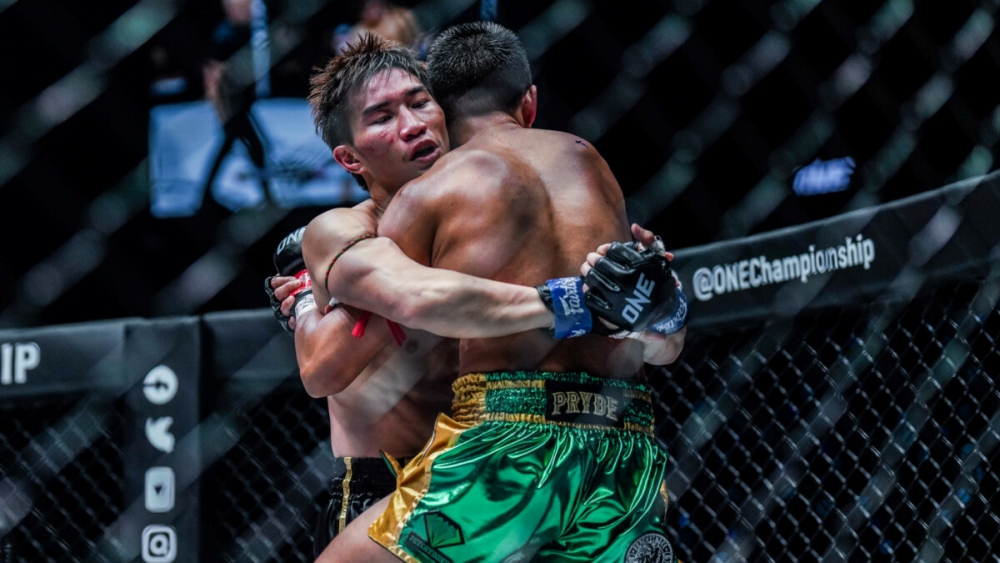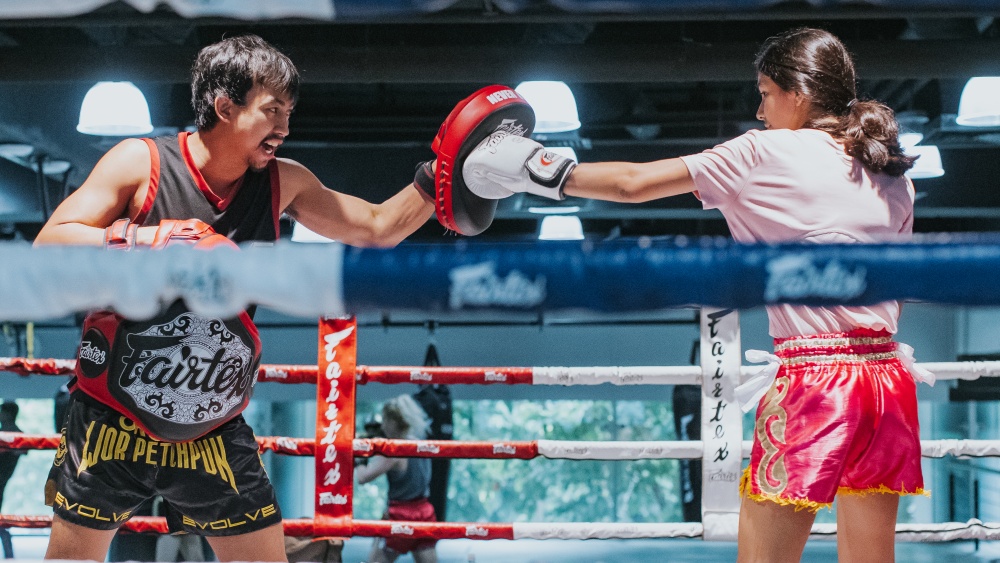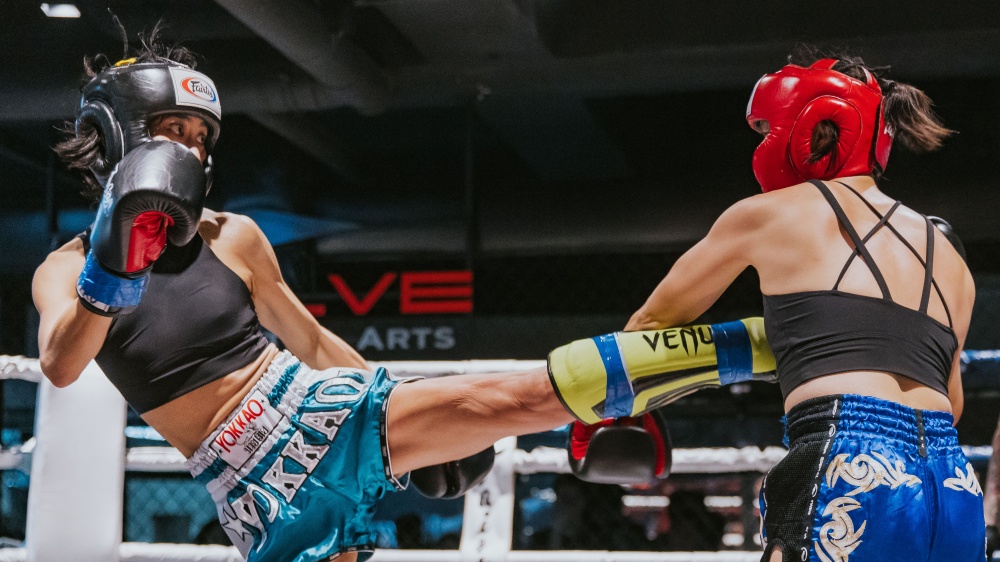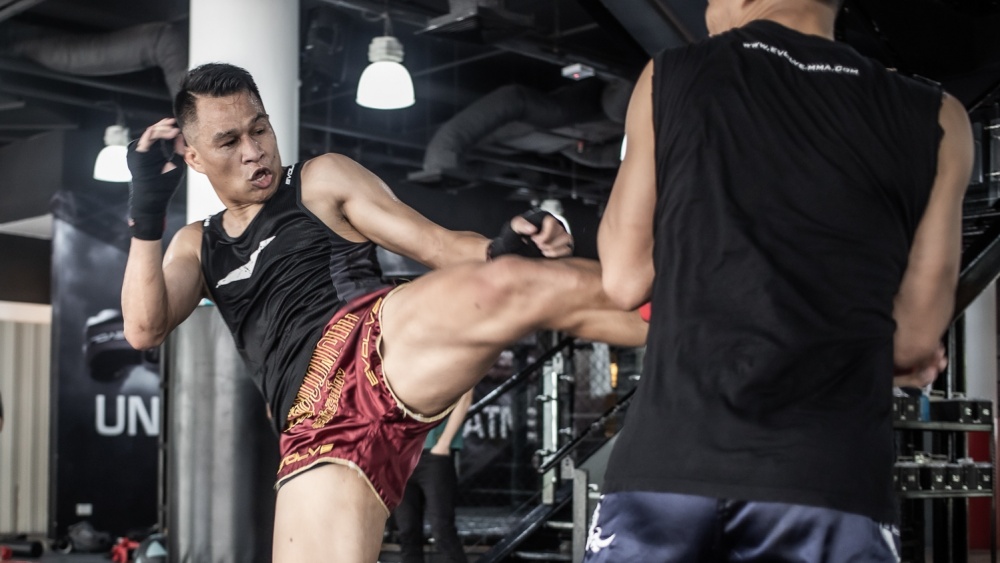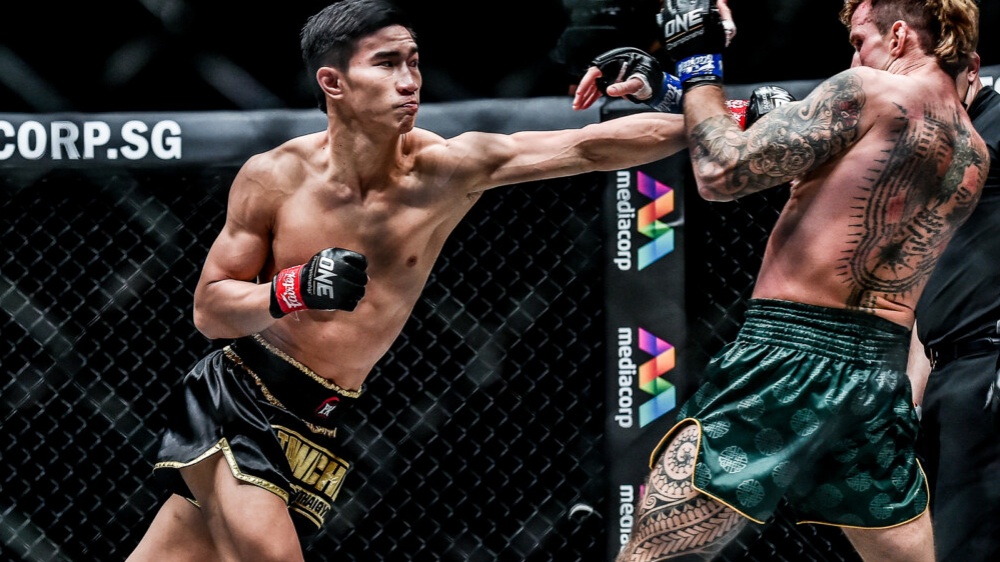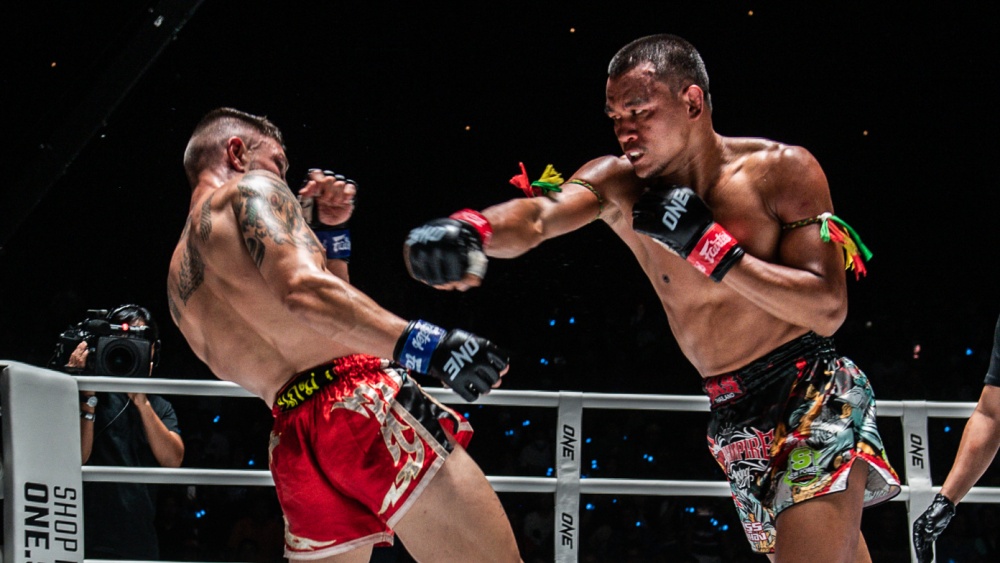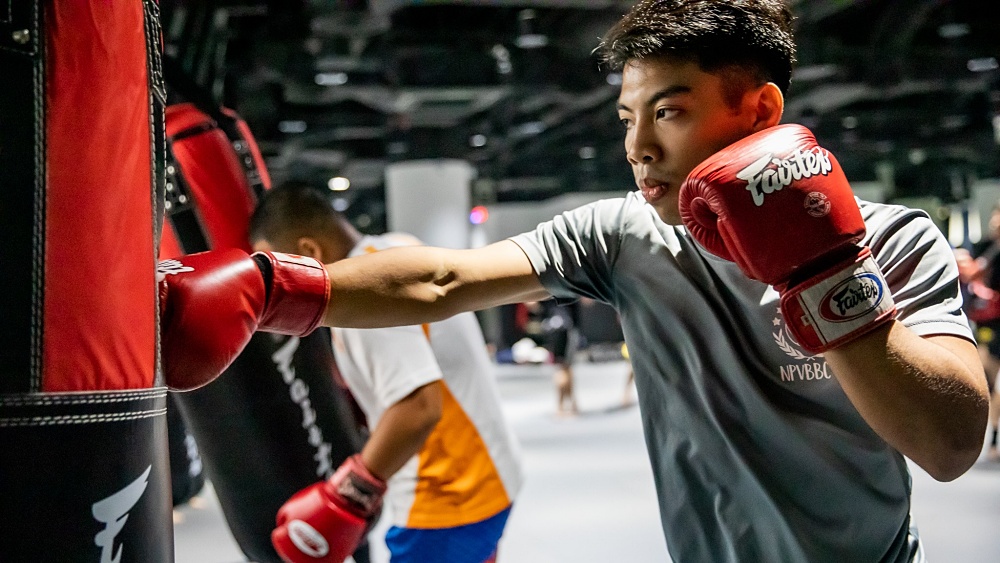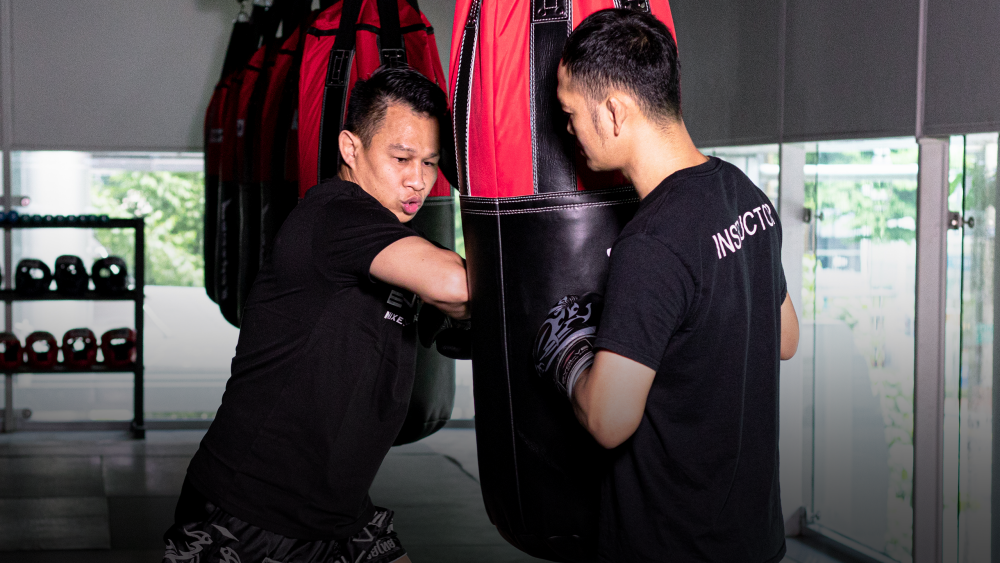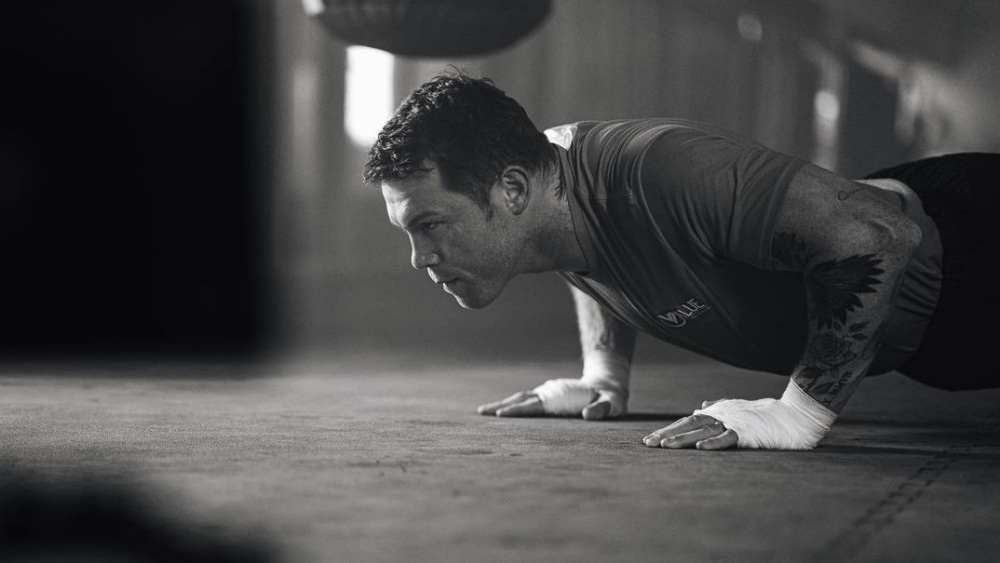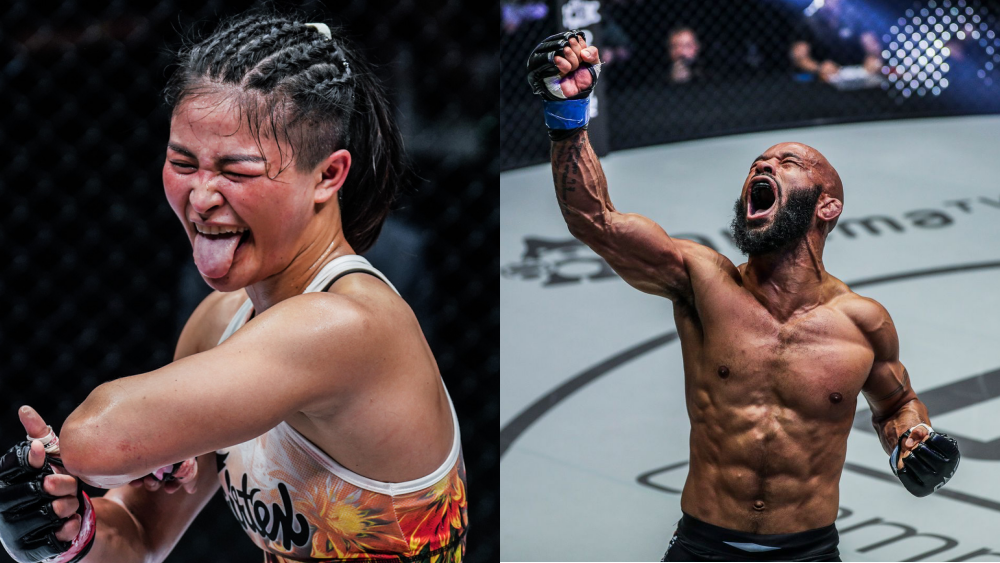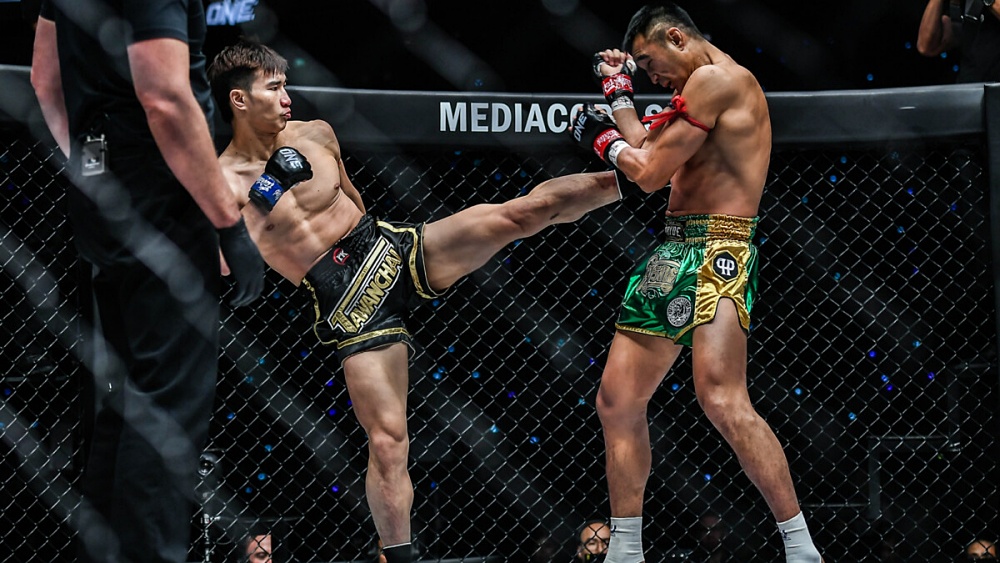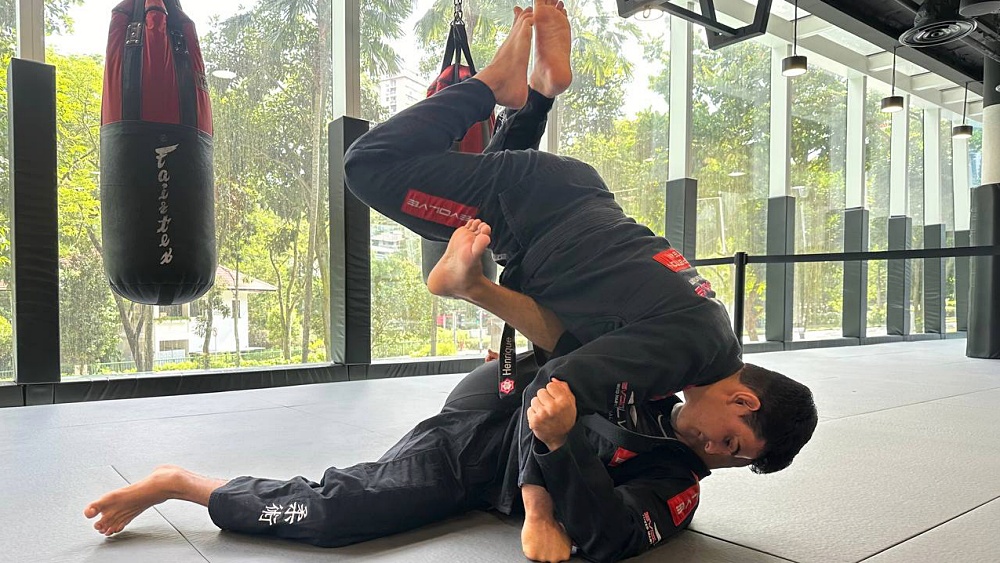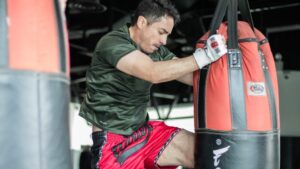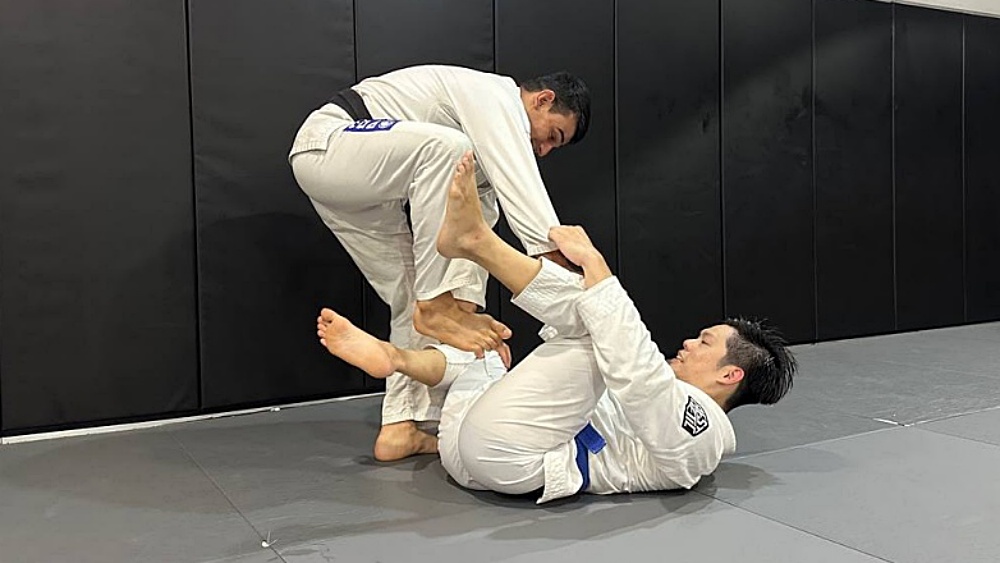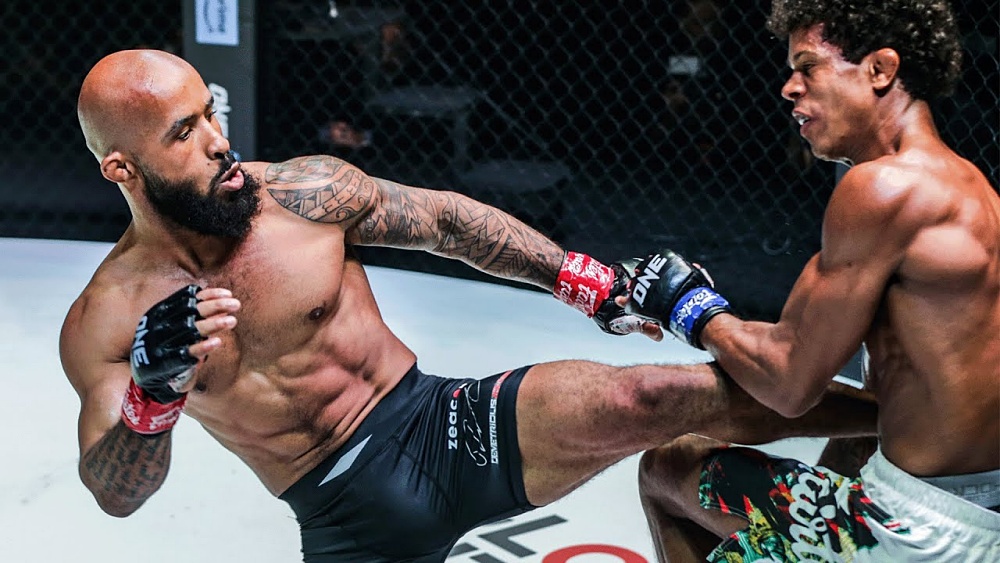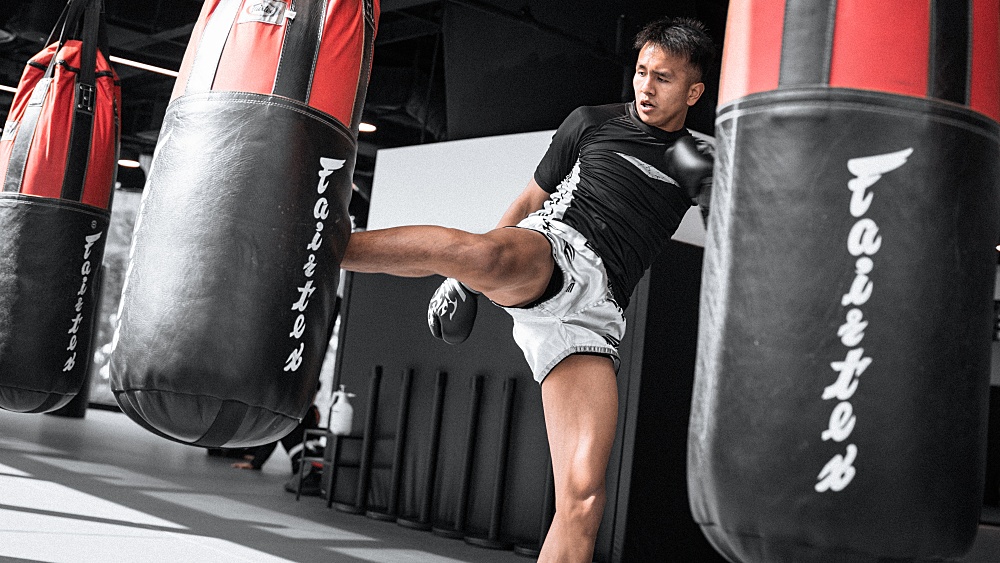Elbows are one of the weapons that are unique to Muay Thai. Most striking-based martial arts tend to be restrictive regarding the weapons you are allowed to attack with. For example, boxing restricts you to using only your fists as weapons.
Muay Thai is also known as the art of eight limbs since it teaches you to use your fists, elbows, knees, and shins as weapons.
It turns out elbows are pretty effective tools in combat. They can land with enough force to knock out an opponent, and they are more likely to open up cuts. That’s a big deal in combat sports since opening a cut on your opponent can prompt an early doctor stoppage.
Ten Effective Muay Thai Elbow Techniques
Ready to add some elbow techniques to your striking arsenal? Here are some techniques you should start with:
1) Horizontal/Side Elbow
This is one of the most straightforward elbow techniques to master since it’s a lot like throwing a punch. The key to getting the most out of this technique is rotating your hips and turning your feet just like you would when executing punches. Keep your free hand right next to your face to protect it while throwing a side elbow.
Here’s how to perform the technique:
- Start in your fighting stance with your hands protecting your face.
- Throw your elbow towards your opponent while torquing your body. Aim to make impact with the boniest part of your elbow.
- Bring your attacking arm back to its starting position, so you’re protected.
There are three main ways to use a side elbow in combat sports or self-defense scenarios:
- From The Clinch: Side elbows can be highly effective from inside the clinch. Johnny Walker’s KO of Khalil Rountree Jr. is an excellent example of how devastating these attacks can be.
- Distance Elbow: The side elbow can be thrown when you’re inside punching range. You can use it as a direct attack or counter.
- To Dominate After Trapping An Opponent’s Hands: The UFC’s Jon Jones is one of the best examples of this. He often uses his long hands to dominate his opponent’s hands when up close, then elbows them with the same arm he is holding their hands with.
2) Framing
Elbows aren’t strictly used as an offensive tool in Muay Thai. Elbows can also be used for defensive purposes like framing to create space with an opponent. Floyd Mayweather is famous for using elbows to prevent opponents from crowding him despite elbows being illegal in boxing.
Framing can also be used offensively. You can use your elbow to push your opponent to where you want them to be before unleashing punches on them.
3) Downward Elbow
The downward elbow is an effective way to get past your opponent’s guard. The technique squeezes through your opponent’s guard to hit sensitive areas like their nose, forehead, or cheeks. It can be used as a direct attack or as a counter.
One effective way to counter with this technique is ducking down to avoid looping shots while simultaneously throwing the elbow.
Here’s how to execute a downward elbow:
- Get into your fighting stance with your guard up.
- Throw your elbow toward the target, angling it slightly downward.
- Turn your hips and feet to put more force behind the attack.
4) Spinning Elbow
Spinning elbows are one of the flashier elbow techniques used in Muay Thai, but that doesn’t make them any less effective. When executed correctly, a spinning elbow lands with enough force to turn your opponent’s lights out.
Spinning elbows can also be used in MMA. Former UFC light-heavyweight champion Jon Jones is excellent at landing these elbows. The attack can be thrown from striking range or the clinch. Spinning elbows from the clinch are typically the most devastating since they’re harder to see coming from that position. Most people focus on securing underhooks, leg sweeps, and takedowns in the clinch, so surprise them with a spinning elbow as you break away.
Here’s how to perform a spinning elbow:
- Push your opponent against the ropes or cage.
- Free up the arm you plan to throw the elbow with. We’ll use your right elbow for this example.
- Put your body in position for the spin by driving your left shoulder into the center of your opponent’s body. You should be at almost a 90-degree angle at this point.
- Now, set up the attack by allowing your opponent to control your left arm. This makes them think they are in control, and it leaves their face unprotected.
- Step towards your opponent’s left with your left foot.
- Explode into your spin while ducking down to defend against potential counters.
5) Upward Elbow
Upward elbows are great for getting past your opponent’s guard, just like downward elbows. They can be used as a spear to cut your opponent open or as an uppercut.
To execute an upward elbow as a spear:
- Get into your fighting stance with both hands up.
- Throw a lead elbow while moving towards your opponent. You want to use your momentum to increase the force the elbow lands with.
To execute an upward elbow as an uppercut:
- Get into your fighting stance with both hands protecting your face.
- Drop a bit at your knees as you prepare to throw the strike.
- Push off the heels of your feet and twist your hips as you uncoil with the elbow. It’s the same motion used when throwing an uppercut.
6) Lawnmower Elbow
This is one of the least used elbow techniques in Muay Thai, but it can be a devastating attack when executed properly. In his earlier days, UFC legend Anderson Silva used the technique to knock out Tony Fryklund. The move works best when your opponent is close to you, especially when they’re moving towards you.
To execute the technique:
- Start in your fighting stance.
- Throw a cross with the arm you plan to use, then follow up with an upward elbow as you bring your arm back.
- Step into the elbow to increase the force it lands with.
7) Downward Jumping Elbow
Here’s an effective technique to get past an opponent’s guard, especially if they’re taller than you. It’s also an effective way to close distance on an opponent. It’s a technique that favors athletic fighters who can explode and jump high. Here are the steps for the technique:
- Start in your fighting stance.
- Throw a couple of jabs or crosses just to get a reaction from your opponent.
- Follow up by jumping towards your opponent while throwing a downward elbow at them.
8) Snap Elbow
The snap elbow is one of the fastest elbow strikes you can throw, yet it does decent damage when it lands. The technique is similar to how you throw a hook with your lead arm. Here’s what it looks like:
- Keep your shoulder and front hand loose.
- Curl your forearm so that it is tight with your bicep.
- Now, throw a horizontal elbow while twisting your torso and feet the same way you would do when throwing a lead hook.
- You can also take a short step while executing the technique to close distance on your opponent.
9) Double Elbow Counter
Here’s an excellent way to use elbows to counter your opponent’s attacks. It’s an advanced technique you should consider adding to your arsenal once you’ve mastered the basics of Muay Thai elbows. Here’s what the technique looks like:
- From your fighting stance, catch your opponent’s leg when they try to kick your legs or midsection.
- Throw a downward elbow at the meaty part of your opponent’s thigh.
- Follow that elbow up immediately with a spinning elbow targeting their face. When done correctly, you should be able to land both elbows.
10) Double Elbow Chop
You might have seen this technique used in movies like Ong Bak. The double elbow looks really cool, but it’s rarely used at the highest levels of Muay Thai. That’s because the technique opens you up to counters if your opponent knows how to fight.
This move is best utilized as a finishing move you use when you already have your opponent hurt. Here’s how to perform the technique:
- Get into your fighting stance and paw at your opponent with a few straight punches to get them to react.
- Launch yourself into the air, jumping as high as you can.
- Bring down both of your elbows on your opponent’s head as you return to the ground.
You may also like:
